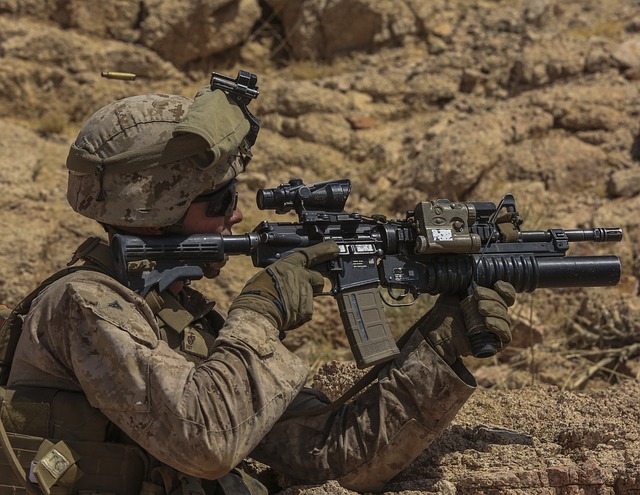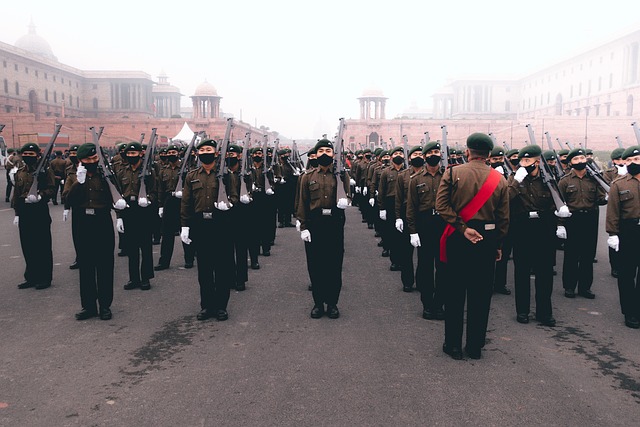The half-staff protocol, an ancient military tradition, lowers flags worldwide as a universal sign of respect, mourning, or memorialization. The 82nd Airborne Division Flag, with its red, white, and blue colors and iconic eagle design, represents the division's history and valor in tactical air assault operations. This flag is specifically honored at half-staff to remember military and public service members, following strict protocol that includes cleaning, folding, and slow, deliberate movement during ceremonies.
“In times of mourning or to honor a national tragedy, the half-staff protocol serves as a powerful symbol of respect. This tradition, deeply rooted in military customs, is marked by the distinctive display of the 82nd Airborne Division Flag. Understanding this protocol is essential for communities and individuals looking to pay their respects properly. From its historical origins to the specific guidelines for lowering and raising the flag, this article explores the meaningful ritual of half-staff, focusing on the symbolic 82nd Airborne Division Flag.”
- Understanding Half-Staff Protocol: A Brief History
- The 82nd Airborne Division Flag: Symbolism and Significance
- When to Display the Flag at Half-Staff
- Proper Procedure for Lowering and Hoisting the Flag
Understanding Half-Staff Protocol: A Brief History

The half-staff protocol, a somber tradition, has its roots in military and government practices dating back centuries. This ritual involves lowering the national or unit flag to half-staff as a symbol of mourning, respect, or memorialization. The specific origin stories vary, but one notable example is that of the 82nd Airborne Division Flag. Historically, during times of war or conflict, flags would be lowered to indicate a period of mourning for comrades lost in battle.
The modern application extends beyond just military contexts, with many countries adopting this practice to honor national tragedies, celebrate the lives of prominent figures, or mark important anniversaries. The half-staff protocol serves as a universal sign of respect, fostering unity and remembrance across diverse communities.
The 82nd Airborne Division Flag: Symbolism and Significance

The 82nd Airborne Division Flag is more than just a piece of fabric; it’s a powerful symbol laden with history and meaning. This iconic flag, often seen half-staff as a mark of mourning or respect, represents the valor and sacrifice of the U.S. Army’s 82nd Airborne Division. The red, white, and blue colors echo the American national colors, while the distinctive design elements pay homage to the division’s pivotal roles in various conflicts.
The flag features a prominent eagle, symbolizing America’s strength and sovereignty, with wings outstretched as if ready to soar. Below the eagle, a parachute represents the airborne capabilities of the 82nd, highlighting their unique role in tactical air assault operations. The division’s motto, “Remember Fort Bragg,” is inscribed at the bottom, referencing the crucial training ground for Airborne troops. This flag serves as a tangible reminder of the unwavering dedication and bravery of the soldiers who have served and continue to serve under its colors.
When to Display the Flag at Half-Staff

The display of a flag at half-staff, also known as lowering the colors, is a significant gesture symbolizing mourning or paying respect. This protocol involves raising the flag to the top of the staff and then lowering it to halfway between the top and bottom. It is a somber ritual observed in many countries, including the United States, as a way to honor individuals who have passed away, particularly those from military or public service backgrounds.
The 82nd Airborne Division Flag, like any other national or military flag, follows specific guidelines for half-staff display. These rules dictate that the flag should be raised to full height on designated days and lowered at specific times, often as a sign of respect during memorial services or national mourning periods. The precise timing and duration vary according to local customs and official announcements, ensuring that this respectful gesture is performed appropriately and with due solemnity.
Proper Procedure for Lowering and Hoisting the Flag

When lowering or hoisting the flag, especially the 82nd Airborne Division Flag, it’s crucial to follow specific protocols for a respectful and honorable ceremony. The process begins with ensuring all flags are clean, dry, and in good condition. Before lowering, the flag should be folded neatly into a triangular shape, a tradition that symbolizes the tri-cornered hats worn by the original paratroopers of the 82nd Airborne Division.
During the hoisting or lowering ceremony, individuals present should stand at attention with their right hand over their heart. Upon command or as a pre-determined schedule, the flag is slowly lowered or raised, never rushed. This deliberate action underscores the gravity of the occasion and respects those it honors, be they fallen comrades or notable figures. The precise execution of these movements contributes to a somber atmosphere, allowing all present to pay their respects in unison.
The half-staff protocol, rooted in military tradition, serves as a powerful symbol of respect and mourning. Displaying the 82nd Airborne Division Flag at half-staff is not merely a ritual but a profound gesture acknowledging loss and honoring those who have served. By understanding and adhering to the proper procedures, we pay tribute to our history and foster a culture of respect and remembrance.
